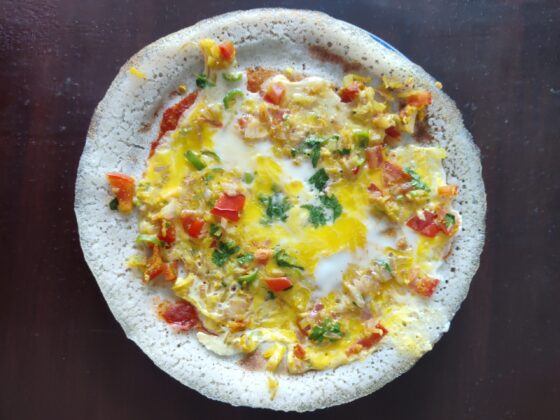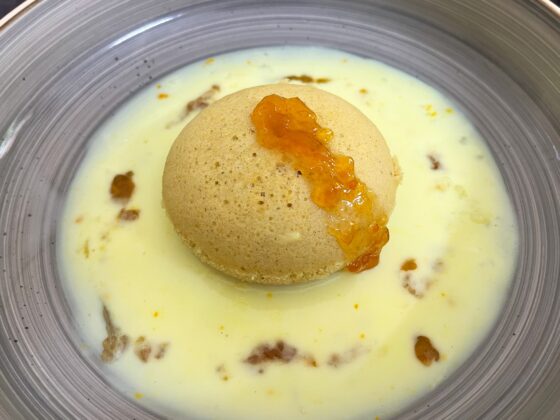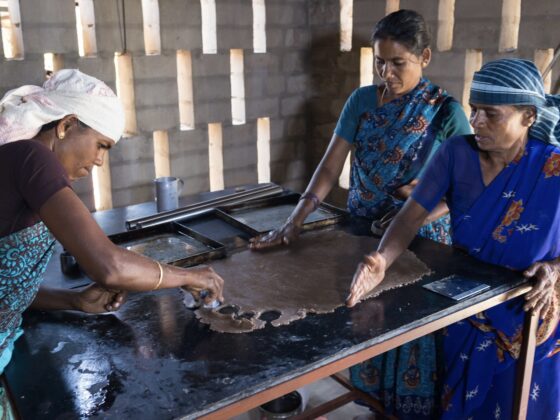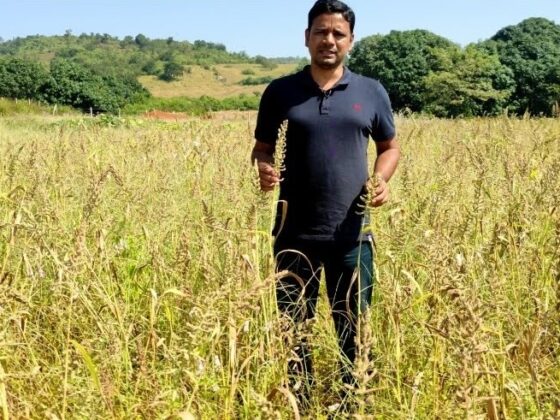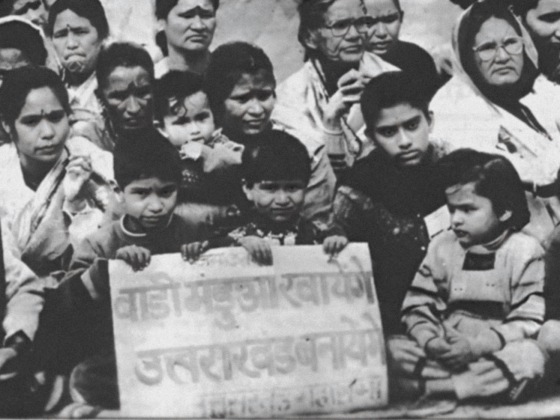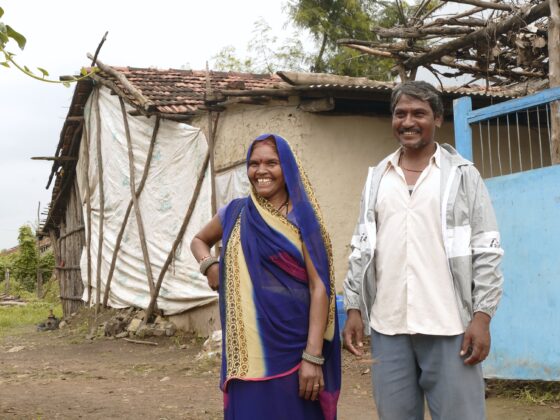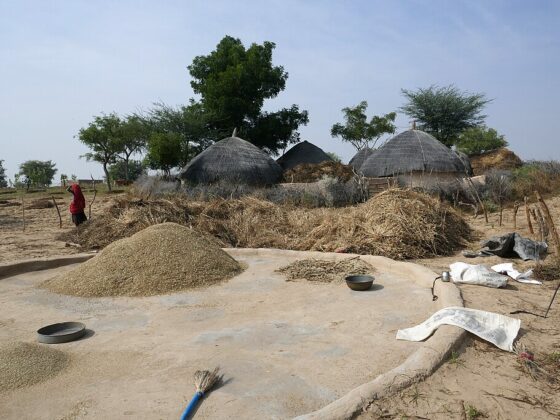What can make a day luminous? What can make millets fun, easy even? Friendships, and a little bit of faith, it seems. Mukta Patil, editor at the Millet Revival Project gathers some girlfriends, and perspectives, at this joyous millet-centric potluck in Delhi.
I knew it was going to be a good day when it started with a pun. I had told everyone attending the potluck that we were going to make millets “fun”. But we went the extra mile—the chalkboard menu somehow said Millet’s Make it Sexy.
In commissioning and editing for The Locavore’s Millet Revival Project, we have tried to cover several aspects of millets in India, right from the sidelining of their growers to how they are being introduced into the public distribution system. What we haven’t been able to share are fun, personal stories around millets, making them more accessible and interesting to readers.
What would it be like, if people simply experimented cooking with millets, enjoyed them, and a story emerged from this? That’s how we ended up with the idea of a millet potluck: the planning, the laughter, the mishaps, and, of course, cooking and eating with chosen family.
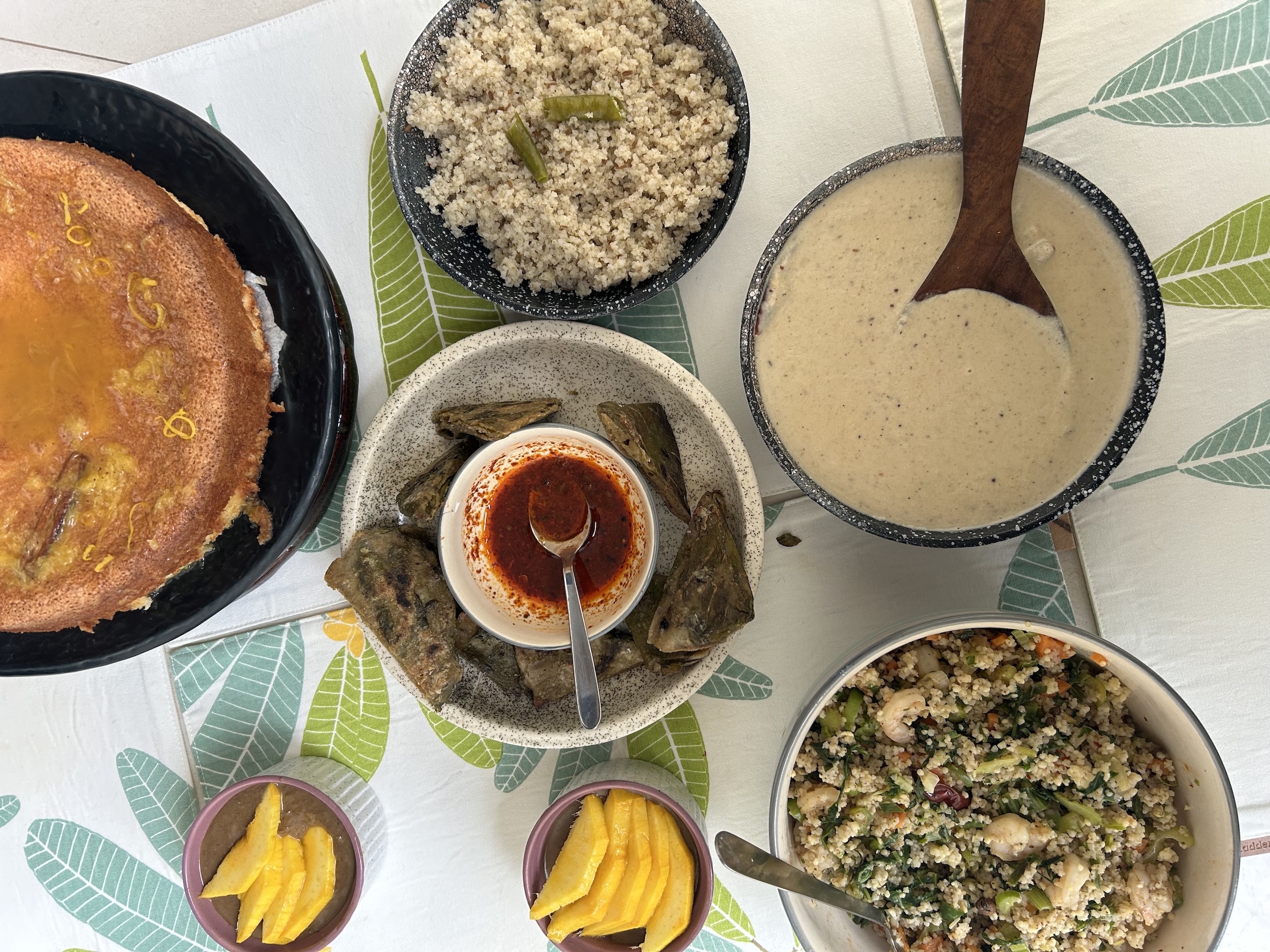
So, here are Shirin Mehrotra, Taiyaba Ali, and Smit Zaveri on millets—keeping it sweet, spicy, and entirely filling.
“We wrote down the menu on a chalkboard and flipped through cookbooks we weren’t going to cook from.”
—Shirin, independent food writer and researcher
For me, it was probably a first—being part of a potluck centered very specifically around millets. I’ve been cooking with millets for some time, maybe a couple of years, and I’ve mostly stuck to making kheer or cooking it like rice and eating it along with a curry or dal.
What stood out at the potluck was how all of us used millets in such diverse ways—both traditional, and non-traditional. I made a little millet payasam, which was strikingly different from what Taiyaba cooked (an Asian-inspired salad with kodo millet), which was, in turn, different from what Smit made (a completely outstanding foxtail millet cake). We were not only understanding how the uses of millets are rooted in food culture and older food habits and practices, but also unlearning; there is scope for interesting innovations and fusion with millets. We don’t usually associate these notions with millets—especially whole millets—which is what we used.
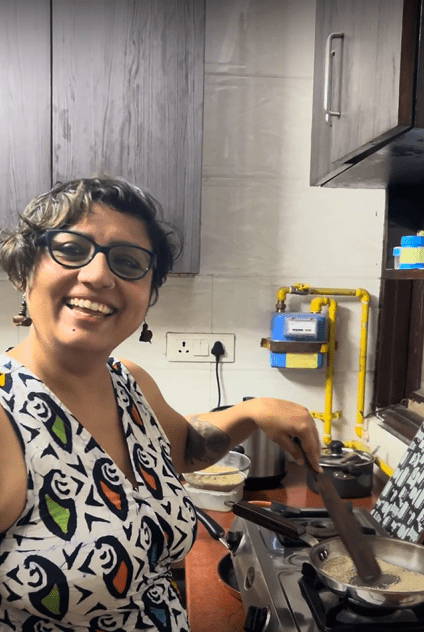
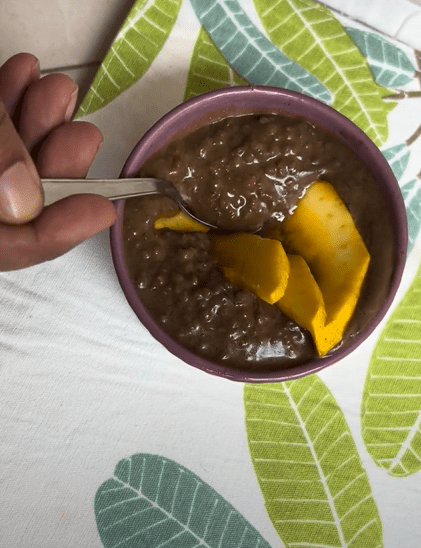
It felt like we were doing something serious—trying to understand how a specific ingredient can be used in different ways—but [it was] also very relaxed. We wrote down the menu on a chalkboard and flipped through cookbooks we weren’t going to cook from. ‘Fun’ is a simple word to describe it, but it was great fun.
It was a beautiful afternoon; I remember it was drizzling, even though it was hot. But it gave us the chance to sit out on the balcony, enjoy the rain, and the food. Just getting together to cook—which I haven’t done in a very long time—was fun.
Read Shirin’s story about millet cultivation and consumption in Chhindwara, Madhya Pradesh, here.
“I love people coming together, eating together, and sharing their thoughts about eating, and cooking.”
—Taiyaba, consultant chef and writer, Lucknow
Increasingly, because of my work, I don’t cook for myself; in that, I don’t cook something that I would enjoy. It’s become more of a sustenance thing. And I don’t cook with millets—at all. I haven’t grown up eating millets, I haven’t seen millets being cooked in my community, in my culture, in Lucknow. Which is why I haven’t picked it up in the market, even though there’s been a lot of noise around it, and people are using it as a replacement for other types of grains.
So when I was told we would be cooking with millets, I didn’t think too much; I wanted to explore what I could do. I went to the sabzi mandi, and was open to whatever was available. I wanted to cook something light and fresh, and not very labour-intensive. I picked up greens, some spring onion, and pak choy. When we were all talking about what we wanted to do, I thought I’d make a salad with prawns. And I made kodo millet patra with arbi ka patta (taro leaves), using the millet paste as the binding agent, though generally we use dal.
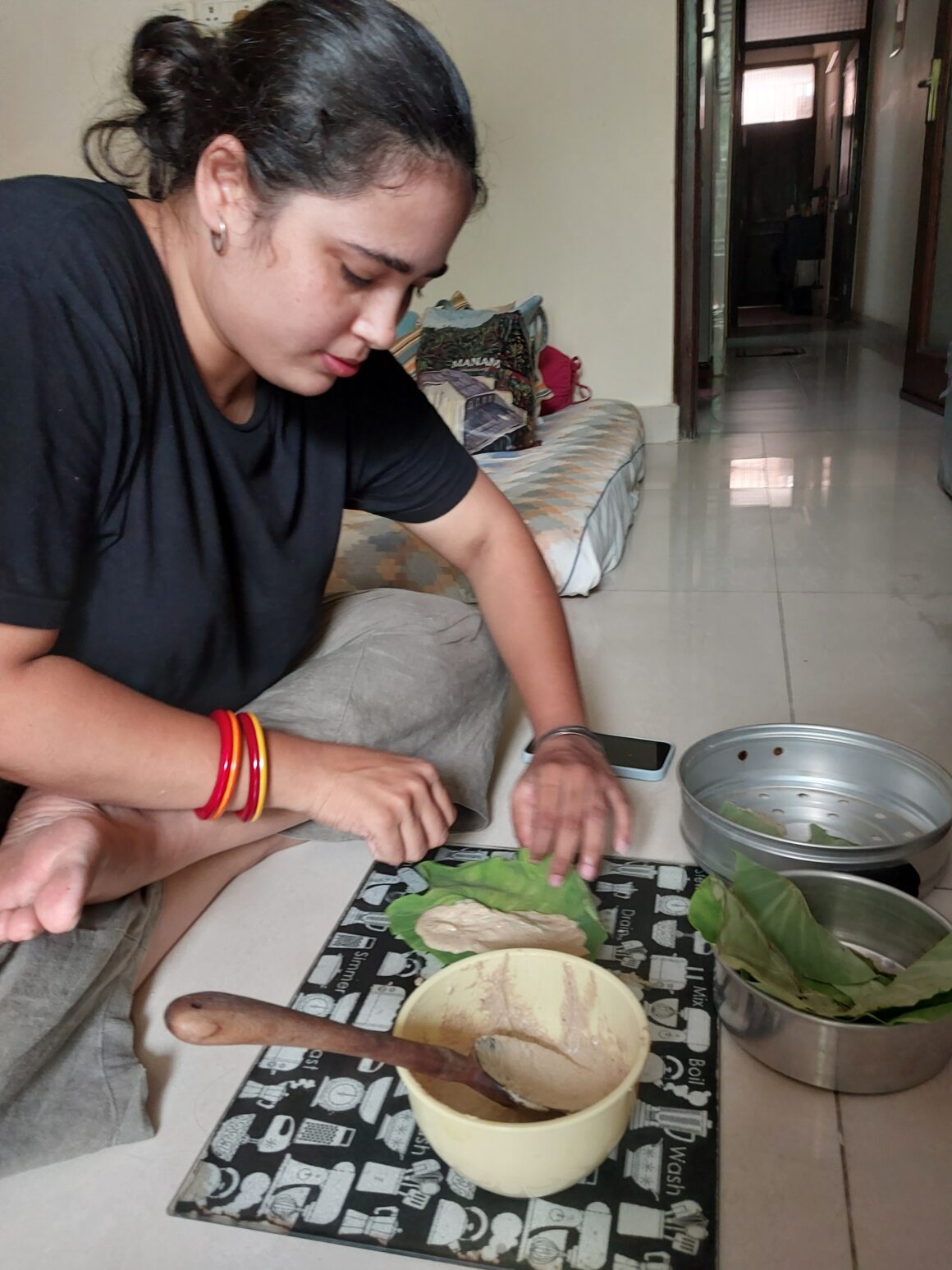
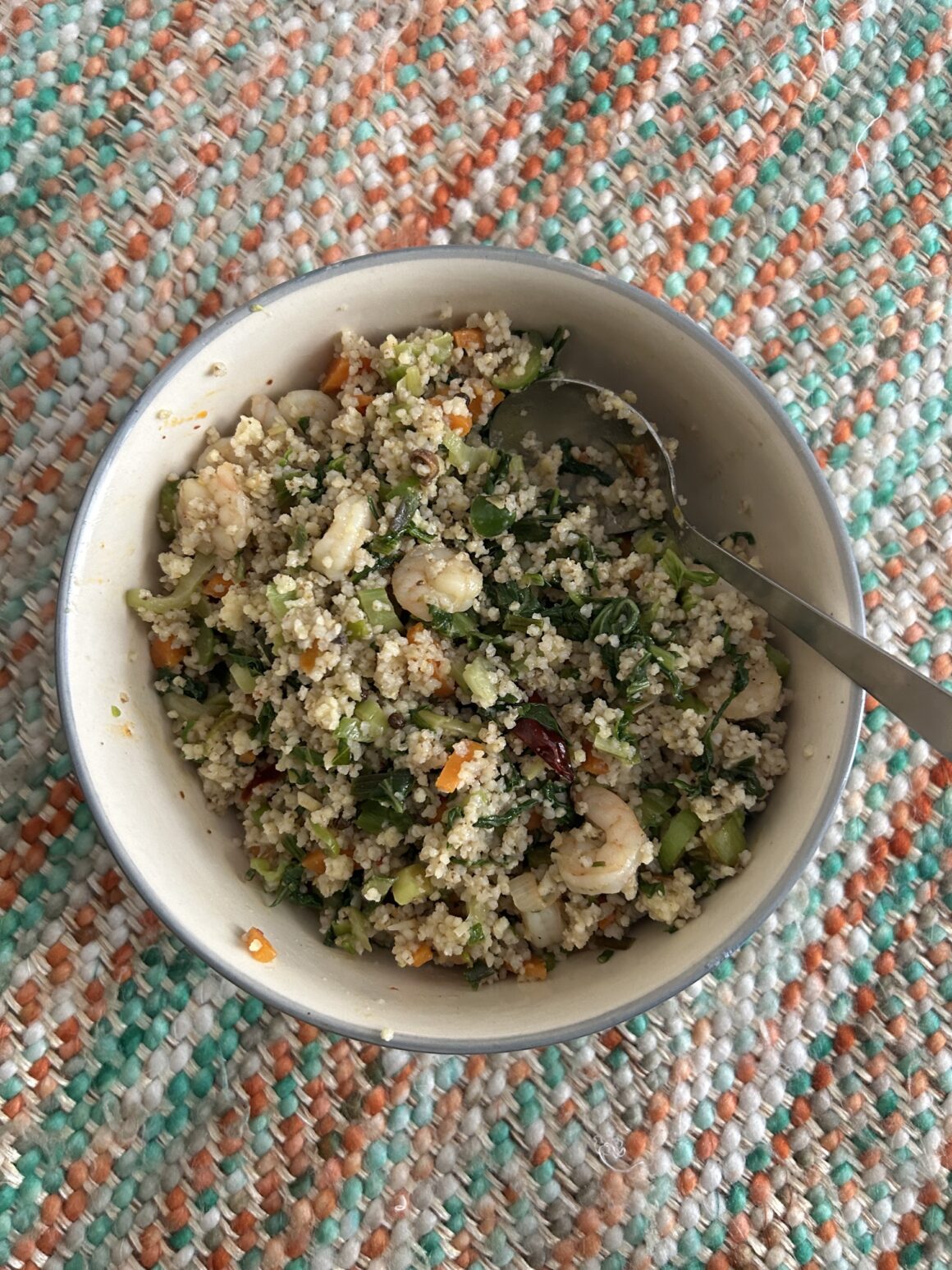
And it was good conversation! People in the room had different degrees of familiarity with millets—from zero to having grown up eating them. The cookout was much needed for me at that point. I love people coming together, eating together, and sharing their thoughts about eating, and cooking.
The fact that we could work with millets and still have texture [in our food] was great. I wasn’t trying to fit them into a frame, just use them instinctively, and that was memorable. Oh, and that most beautiful orange cake, which we ate so much of, despite saying we can’t eat any more.
“I want to eat a giant slice of cake and feel happiness.”
—Smit, publishing consultant and baker
I wasn’t baking at all because it just made me sad. After weeks and weeks of simply cooking because I had to, and also battling my own relationship with baking (I wasn’t able to eat anything I was baking because of dietary restrictions), it was comforting to be around people whose cooking always inspires. It pushed me to bake for myself.
Trying to work with millets, made me break preconceived notions of what cake is—of this idea that if I need to make cake, I’ll need a ton of butter and frosting. That day, I was like, ‘Here is what I want to eat, here is what I can use, here is what I can’t use.’ Coming up with something creative that was still delicious and deeply satisfying—that was amazing.”
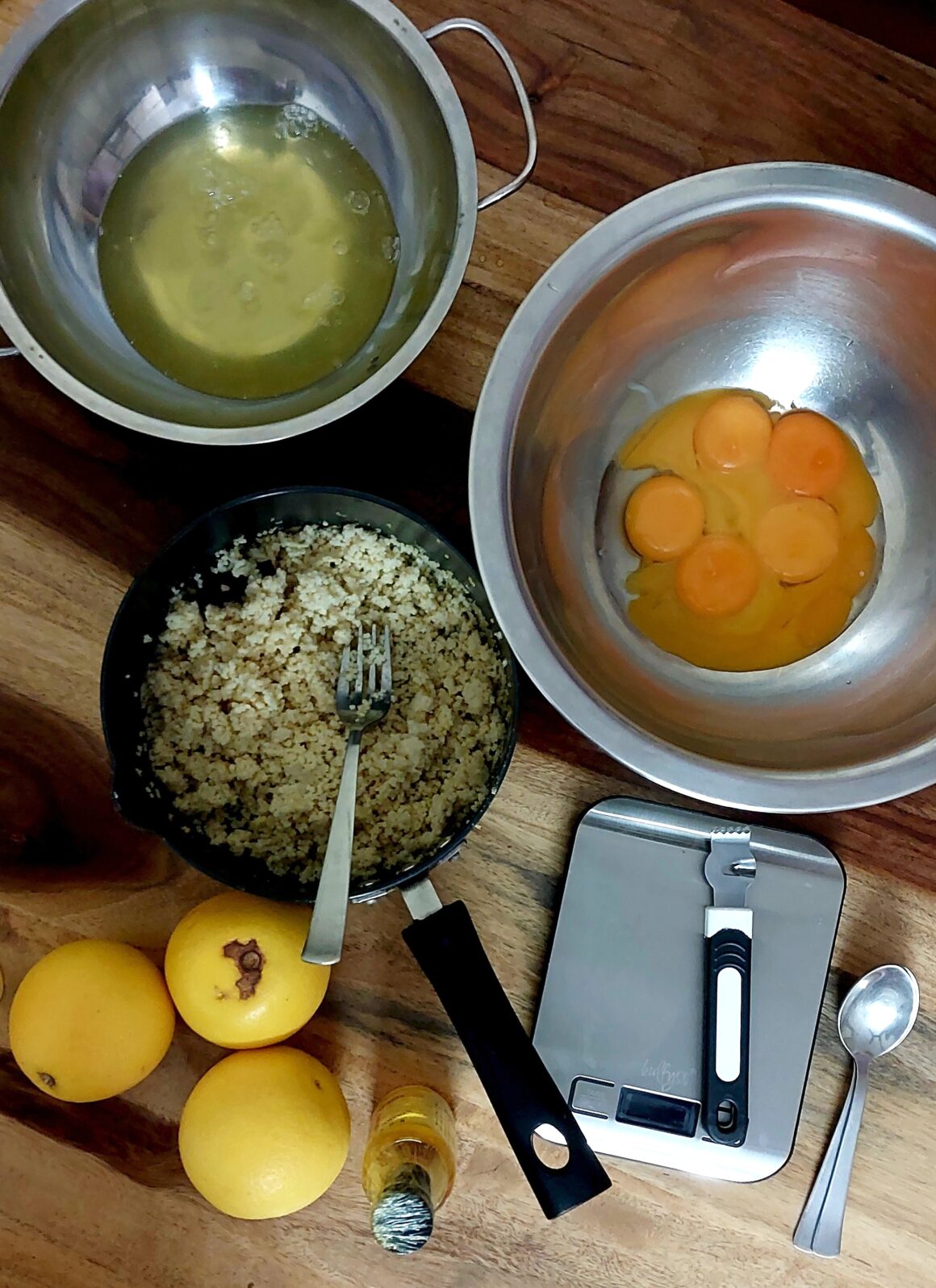
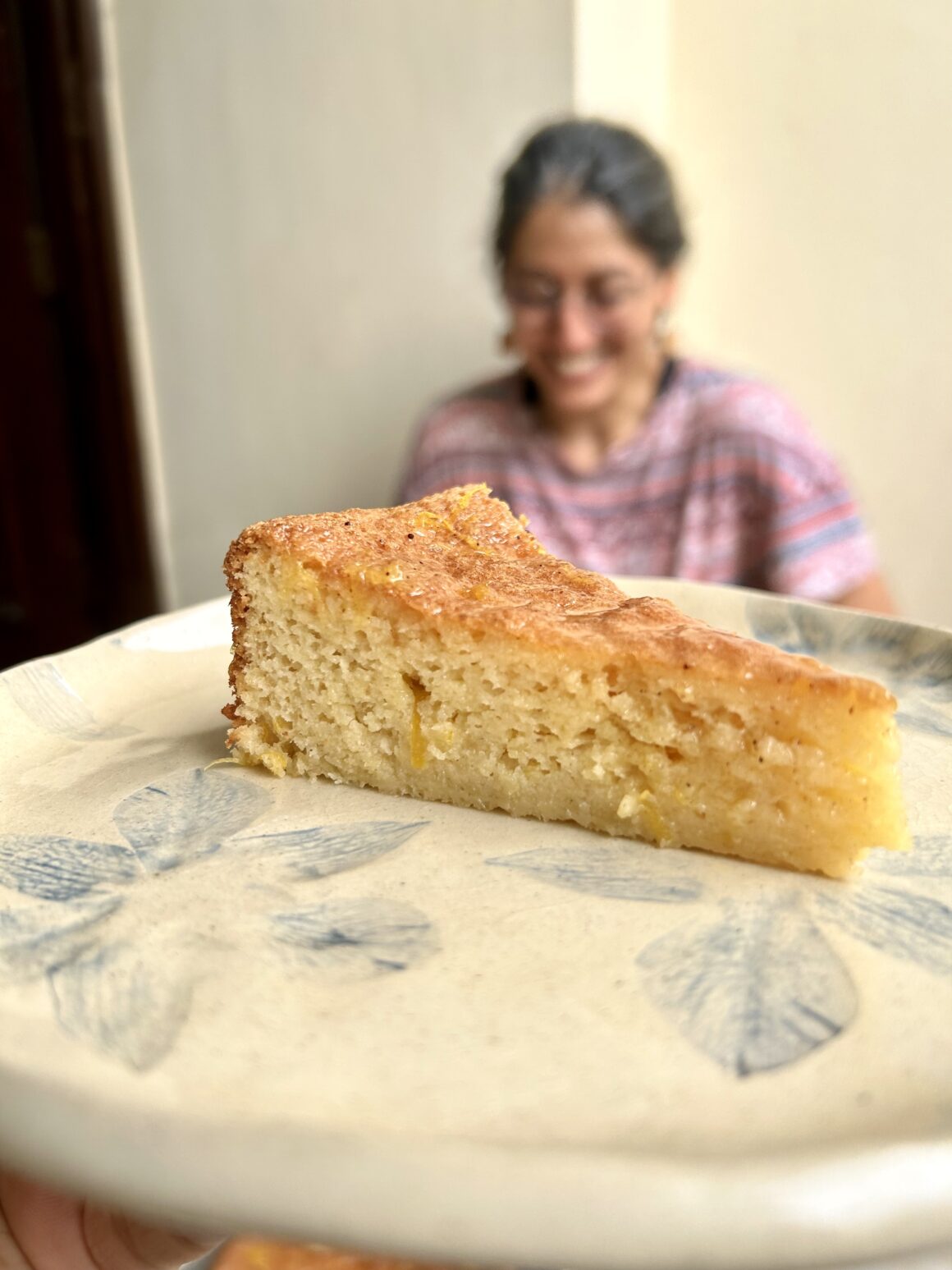
And it was really, really nice to say, “I’m just doing this with people I know and care about, and all of us want to eat something lovely. I want to eat a giant slice of cake and feel happiness.”
And that’s what I felt when I pulled that cake out of the oven, sliced it, and took a bite. I felt such joy from something I had created after so long.
This sense of sisterhood around me—which makes me feel so good about myself is…wholesome and fulfilling.
It makes the heart happy.

“Once in a while, it’s nice to pull out the fancy napkins and dinnerware. Tell ‘that’s what she said’ jokes on a working Wednesday. Have that extra slice of cake. Take a nap. “
Don’t make kheer if you want salad. If you make kheer, use the kind of millet and milk you want. Eat cake, okay? If you only know how to make one thing, get some girlfriends together who know another thing. It all works out fine, mostly.
A day, an essay about the day, it can be something easy. Everything doesn’t always have to be hard. There are no real lessons here, just some women, struggling with—and juggling—life, who spent a balmy-breezy afternoon cooking together. It was fun—we talked and laughed and ate.
It was all about millets, of course, but they were also entirely beside the point.
Fin.
Mukta Patil heads the Editorial Lab at the Millet Revival Project. She is a writer and editor who works on stories that spotlight our food systems, and how they interact with the climate emergency, the environment, and people.
Shirin Mehrotra is an independent writer and researcher whose interests lie at the intersection of food, culture, and communities with a special focus on urban foodscapes and migration. Her work has appeared in publications such as Whetstone Magazine, The Juggernaut, Feminist Food Journal, and HT Brunch among others.
Smit Zaveri is an editor by day and baker by night. As a freelance publishing consultant, she is always on the lookout for stories.
Taiyaba Ali is a consultant chef and writer from Lucknow. She documents the city’s foodways from a gendered lens, bringing out narratives of women and home kitchens.

This article is part of the Millet Revival Project, The Locavore’s modest attempt to demystify cooking with millets, and learn the impact that it has on our ecology. This initiative, in association with Rainmatter Foundation, aims to facilitate the gradual incorporation of millets into our diets, as well as create a space for meaningful conversation and engagement so that we can tap into the resilience of millets while also rediscovering its taste.

Rainmatter Foundation is a non-profit organisation that supports organisations and projects for climate action, a healthier environment, and livelihoods associated with them. The foundation and The Locavore have co-created this Millet Revival Project for a millet-climate outreach campaign for urban consumers. To learn more about the foundation and the other organisations they support, click here.


